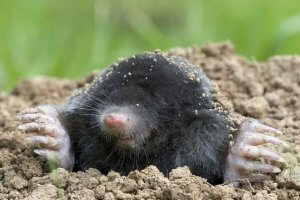In the pest control industry, we are no stranger to dealing with very real fears. Many of the critters we deal with have some kind of a phobia attached to them— whether it be general fear, anxiety induced by the diseases they carry, etc. We know that we are often dealing with sensitive nuisances. This is why it brings us so much pride to come to the aid of our customers. We truly have seen it all, and are pretty much desensitized to most. However, there are some creepy crawlies that will cause even the most seasoned PCO to jump— namely, spiders.
Spiders are among the top concerns for homeowners. It is important to know that not all spiders are “bad”. Many are extremely helpful to the ecosystem. Moreover, the presence of spiders ensures that the insect population is being controlled naturally. Despite the positives, many have an instinctive fear of spiders and will not tolerate their presence in the home. This is where we come in. There are a few main issues that we hear about concerning spiders: the fear of bites, the visual unpleasantry of their presence and webs, and the potential for structure staining and damage from their droppings.
Spiders are generally an unpleasant sight in outdoor seating areas, as well as on the exterior of structures. Spiders and their webs cause an unsightly problem for both owners and guests. Their droppings leave stains and with time they can do damage by causing build up, especially with vinyl siding. Have you ever returned your cottage or cabin only to walk through webbing to reach the door? Are you sweeping webbing off your screens? Do you have to wash the spider mess off your windows more than once a year? These problems are very common in wooded and heavily-scrubbed areas as well as waterfront properties. In our great state it seems that many seasonal homes are located in these areas.
While there are many different types of spiders in Michigan, most of them are simply web builders and house invaders. There are only two spiders in Michigan that we consider dangerous: the Brown Recluse the Northern Black Widow. Fortunately, these are not very prevalent and we rarely find them in or around homes.
The Brown Recluse
The Brown Recluse rarely bites unless pressed against the skin. It is common to its name in the fact that it hides in dark areas, gloves, undisturbed clothing and bed sheets, and it is non-confrontational. We identify the Brown Recluse by the violin shaped marking and can range in color from cream to brown to dark brownish gray. If bitten by this spider it is imperative you seek medical attention immediately as it can turn into severe skin lesions.
The Northern Black Widow
The Northern Black Widow is shiny black in color and can be identified by a red hourglass marking on the underside of the abdomen, which is incomplete or split in the middle. It can also have white stripes on the abdomen. This spider is timid and chooses to flee when disturbed, therefore rarely bites. If bitten pain is felt almost immediately and increases for 1 to 3 hours. There has only been a 1% mortality rate from a Black Widow bite.
We have many species of spider that help to control mosquito, wasp, hornet, and even other spider populations. However, their legginess and seemingly erratic movement patterns make them all equally unwelcome house guests for most. Your every day home invaders include the common house spider, wolf spider, daddy long-legs, orb weaver and the jumping spider. Most are quick to dodge anything you throw at them and their disappearance can cause uneasiness for even the toughest person.
If you are noticing spiders in your home, especially in the spring months, it is important to call a licensed pest control professional. Spiders will lay between 2 and 1000 eggs, depending on the species, so a small problem can become much larger in a short amount of time! Identification is key with these pests, and we always ask our customers to try and save a specimen for the professional to identify and treat accordingly.
Hogarth’s Pest Control specializes in the removal and prevention of spiders in and around homes. If you are experiencing an unpleasant spider issue, do not hesitate to give us a call today!
 If you’ve ever caught sight of a mole, you know they’re really quite strange looking. Sure, they are small and furry— but that is more or less the extent of their cuteness. Moles have inconspicuous ears and eyes, meaning these features are not prominent; because of their subterranean lifestyle, they are practically blind, as they do not require their eyes to tunnel so they remain closed at all times. New research suggests that certain species of mole are evolving without eyes all togetherⁱ, according to a team of researchers led by J Martin Collinson from the University of Aberdeen. Their front legs were designed for digging, equipped with large webbed paws with 5 finger-like appendages; whereas their back legs are reduced and nowhere near as powerful, though webbed as well.
If you’ve ever caught sight of a mole, you know they’re really quite strange looking. Sure, they are small and furry— but that is more or less the extent of their cuteness. Moles have inconspicuous ears and eyes, meaning these features are not prominent; because of their subterranean lifestyle, they are practically blind, as they do not require their eyes to tunnel so they remain closed at all times. New research suggests that certain species of mole are evolving without eyes all togetherⁱ, according to a team of researchers led by J Martin Collinson from the University of Aberdeen. Their front legs were designed for digging, equipped with large webbed paws with 5 finger-like appendages; whereas their back legs are reduced and nowhere near as powerful, though webbed as well.